The World at His Feet: Devotion to the Pierced Feet of Jesus
“How lovely on the mountains are the feet of Him who brings good news.” (Isaiah 52:7a)
On the solemnity of Corpus Christi Sunday, we celebrated the amazing meaning of the words from John 6:55: “For my flesh is meat indeed: and my blood is drink indeed.”
The Feast of Corpus Christi is seen today as largely a Eucharistic celebration. However, historically the feast was instituted to better contemplate the humanity of Jesus, particularly His suffering.
Scholars point to the first recorded stigmata of St. Francis in the 13th century as reviving the interest in His wounds, which led to the institution of the feast.
We commemorate the physical sufferings of the mystery of the Word made flesh in many ways: venerating most notably the precious Body and Blood, the Sacred Heart, the Holy Face, the five Holy wounds, the Sorrowful Mysteries of the rosary and the wounds of the Passion.
These devotions of our Lord have days of observances associated with them and numerous novenas and other prayers and devotions assuring that these sacred mysteries of our Lord receive due consideration and adoration. However, as we consider the mysteries of the Word made flesh, it would seem that one aspect of the Body of Christ is yet to be adequately represented or fully appreciated among the wide range of devotions: His feet!
Thus, I thought it most fitting to explain and suggest the basis for a Devotion to the Pierced Feet of Jesus.
- Are There No Devotions to the Pierced Feet of Jesus?
- An Introduction to the Devout Life
- The Lowly and Forgotten Feet
- Those Irresistible Baby Feet
- The Anointing
- Carpenters Tools And The Nailed Feet
- The Footstool
- Purity Restored
- The Agony
- Greetings and Acts of Humility
- The Missionary Mandate
- Ascension: That Is Gonna Leave A Mark!
- This Devotion Offers Feats Of Strength
- Resources
Are There No Devotions to the Pierced Feet of Jesus?
My interest in the precious and adorable feet of Jesus was sparked several months ago when for whatever reason I found myself doing an internet search for a “Devotion to the Pierced Feet of Jesus.” I don’t recall why– maybe I saw a beautiful photo of a nun kissing the feet of a large crucifix or something like that and it aroused my curiosity.
I was surprised to find that despite the amazingly rich diversity of devotions out there that absolutely nothing came up. One would think that a Saint or somebody out there has done something on it!?
Perhaps there is a book, maybe out-of-print or something that is to be found on the internet somewhere? Maybe there is website content or books to be sold but is just poorly indexed and not configured properly to rank and be easily found?
The closest thing we may have pertaining to devotion to the Pierced Feet comes from a brief mention in An Introduction to the Devout Life by St. Frances de Sales:
“If you will take my advice, you will not toil on obstinately in resisting them by exercising the contrary virtue, for that would become a sort of struggle with the foe; but, after making an act of this directly contrary virtue , simply turn with your whole heart towards Jesus Christ Crucified, and lovingly kiss His Sacred Feet.”
An Introduction to the Devout Life
Anyway, I had been having some minor foot problems, which was causing me to examine my toes. At that time, I just happened to notice a red dot on the middle of my right foot. No itch, no pain—no nothing, just a random reddish freckle-like dot. Perhaps it was just a random blemish…but, I thought — just in case in the unlikely event the Lord is sending me a message — that I should take this as a sign to start learning about the feet of Jesus. So, I thought it best not to (ahem) drag my feet at the Lord’s possible promptings and get on with it! As of this writing, the red dot is still there (although it has faded some).
An Introduction to the Devout Life
***Use coupon code BSA for 15% off select TAN Books items not on sale***
The Lowly and Forgotten Feet
The feet are a remarkable design of our Creator, enabling most of us to get around. Most of us take our feet for granted as part of the body often covered up and neglected.
With the modern practice of wearing shoes and socks or other foot coverings, our culture has lost a sense of the significance of the feet.
In these present times, one may be tempted to think of the feet as ugly and smelly and not worthy of much respect. However, in biblical times, feet were given much more dignity and attention as seen by honoring guests by washing their feet. References to foot washing as a greeting trace all the way back to the earliest of times (the first reference is Genesis 18), but complimenting someone on their shoes is usually as far we go these days.
The numerous foot washing references in Scripture would have been understood by the daily experience of a Jew. The washing of the feet signified the constant threat of being soiled with sin, because the feet, which were continually in close contact with the earth, were likely to become soiled, unless great care was taken.
When Jesus washed the feet of the apostles, it was understood as a symbol of cleansing and absolution. At the beginning of this article, I spoke of the lack of devotions to the feet of Jesus despite all the many wonderful things they represent.
During my reflections and study of the feet of Jesus, I came across nine different symbols of Jesus’s feet, conveniently suggesting a nine-day novena.
The outline for such a novena and some suggested prayers will be added as a future supplement to this article as God inspires me. So watch for it on this website!
Those Irresistible Baby Feet
Medical science has taught us that the skin of an infant born via Cesarean section birth is essentially sterile. The unborn baby’s immune system is essentially the mother’s.
Upon birth, the skin is not yet inhabited by the common microorganisms such as Staphylococcus that inhabit the skin and function as part of our immune system. From the birth canal, the touch of the mother and father and the baby’s contact with various surfaces, the baby begins to acquire the millions of various micro-organisms that begin colonizing the skin.
As such, a baby’s feet are often less exposed and therefore less colonized. It also takes time for the dead outer layers of skin to fully develop. The feet are not toughened until a child begins to walk.
Our senses seem to understand this: the wondrous and irresistible sense of purity and innocence of baby feet. As anyone who is a parent knows, there is a certain special affection and love for a newborn child and this is often evoked in kissing the unspoiled softness of a baby’s feet.
Many apparitions of Mary have included the baby or child Jesus.
In the liturgical year, we celebrate Christ in the youthful stages of life: from the Incarnation to His pre-natal greeting of His cousin in The Visitation, with almost a month dedicated to His infancy — longer if you include the Feast of the Presentation.
An exorcist recounts the last words of Mary, as were recorded from the demon of a possessed person commanded to speak:
“Those feet that have walked so much… those feet that have walked so much…how they were beautiful when they were so little! How many times I kissed them!…How many times I kissed them!…Make me kiss them as they are! Full of blood, Father! Tell Him that I am here! Tell Him that I love Him! That I understand Him! That I am with Him, that I suffer with Him!”
Condensed from the account in “The Anti-Mary Exposed: Rescuing the Culture From Toxic Femininity,” by Carrie Gress
The last words of Mary at the foot of the cross capture this wonderous joy of a mother and the affection for her new born baby. However, we don’t have to be within the Christmas season to appreciate the wonderful baby feet of Jesus. Like Mary, we can adore the precious baby feet of Jesus, even at the foot of the cross!
The Passion and Death of Jesus Christ (Deluxe Edition)
***Use coupon code BSA for 15% off select TAN Books items not on sale***
The Anointing
In two instances in the Gospel of Mark, people had fallen at Jesus’ feet to ask for healing. But the first recorded act of veneration and devotion of Our Lord’s feet was the anointing at Bethany:
“Jesus therefore, six days before the Pasch, came to Bethany, where Lazarus had been dead, whom Jesus raised to life. And they made him a supper there: Mary therefore took a pound of ointment of right spikenard, of great price, and anointed the feet of Jesus, and wiped his feet with her hair; and the house was filled with the odor of the ointment.”
John 12:1-3
The familiarity and importance of this passage is underscored as being recorded in all four Gospels. According to the mystic Ven. Mary of Agreda, this Mary refers to Mary Magdalen (Mystical City of God, vol III). The mystic, Bl. Anne Catherine Emmerich, also affirms this was Magdalen from her visions.
We can learn much from Mary Magdalen’s actions. From a true and penitent conversion, God can give us a privileged role for us in our life. She will always be remembered for this bold act of charity, perhaps more so than her past life of sin.
The wiping of His feet with her hair shows an appropriate and physical component of affection and love, which was a dramatic reversal of her past disordered use of carnal affections.
There is no reason for us to withhold this same sensual physical affection from our Lord!
According to Bl. Anne Catherine, she would repeat this devotion of kisses, but she would also be washing the blood off with her tears and wiping dry the feet of the expired body of Jesus with her hair while others prepared the body for burial.
The anointing of Jesus’ feet at Bethany is an important precedent for the necessity and power of the use of sacramentals in the Christian faith. This act would have satisfied the Jewish requirements as part of their customs of burial and reverence for the dead.
For the Catholic, this anointing evokes the future institution of the use of oil in the sacrament of Last Rites.
When we recall this anointing of the feet, it reminds us that most of the rich Jewish traditions were carried forward and adapted by Christians into sacramentals. And why shouldn’t they? The God of the New Testament is that same God that the Jews devoutly worshiped since ancient times.
Carpenters Tools And The Nailed Feet

Our Lord’s precious feet go from being cleaned, anointed and tenderly kissed to days later being brutally and tortuously pierced by nails.
The Psalmist prophecies this dramatic reversal in the arrest of Jesus and the nailing of the feet:
“They humbled his feet in fetters: the iron pierced his soul.”
Psalm 104:18
Hammer, nails and wood are the most basic and common elements of carpentry and building construction. As such, they are symbols of building, strength and fortitude.
The nails recovered from the tombs of crucifixion victims indicated the nails were typically 6 inches long, 1 cm thick with four sides. How horrifically ironic then that the basic materials and tools of carpentry were used against the Master Builder!
While Our Lord’s hands were forcibly stretched apart on the cross, the evil one may have thought this suitable diabolical punishment for the countless hours they were placed together in Our Lord’s rich and fruitful prayer life. However, paraplegics teach us that the feet can be trained to do almost anything the hands can do. The feet being placed one over the other, in a sense, became the “praying hands of Christ.”
Despite the agony and physical restrictions, the evil one was unable to thwart Jesus praying for us on the cross.
The visions of Bl. Anne Catherine indicated that the wood behind the feet that would receive the nails was hollowed out in advance. This was done to try to prevent the breaking of the bones of the feet during the nailing process, which would have been undesirable from the executioner’s plan of extending the length of the torture and possibly hastening death by asphyxiation (see more on The Agony below).
Thus it was the prophecies referenced in Exodus 12:46, Numbers 9:12, and Psalm 33:21, brought to completion that no bones would be broken of Jesus, our Passover Lamb.
Based on Bl. Anne Catherine’s accounts, the nails were reportedly withdrawn by a centurion that was converted at the scene of the crucifixion and given to His mother Mary. We know nothing of the nails whereabouts after that.
The three holy nails were reportedly recovered by St. Helena. There are presently about 36 nails claimed to be artifacts and none have been authenticated with certainty. Some are likely to be replicas touched to the original, making them second class relics.
An archaeological discovery of Caiaphas’ tomb in 1990 included the discovery of two severely corroded and bent nails that could be dated as 2000 years old. The historical reports of some of the nail relics or pieces thereof being placed in the helmets or made into the tines of crowns of Christian monarchs references the hidden kingship of Our Lord.
The nails remind us then that our strength and fight is in the cross. The real carpentry of the cross of Jesus was His work beginning to build something special for us and the Father: His bride, the Catholic Church.
The Footstool
The precious feet of Jesus were nailed to a small wooden pedestal or crossbeam known as the suppedaneum.
In the Orthodox tradition, this pedestal is slanted towards the good thief St. Dismas, illustrating Christ figuratively as a balance of justice. Many depictions of the bare cross omit this small but horribly significant feature. More on the cruel function of this feature in the following section.
The Old and New Testaments are replete with references to a footstool. The positioning of something underfoot shows power or victory over it. In Psalm 110:1,
The Lord says to my Lord: “Sit at My right hand until I make Your enemies a footstool for Your feet.”
As an example from the New Testament, St. Paul proclaims:
“For He must reign until He has put all His enemies under His feet. The last enemy that will be abolished is death. For He has put all things in subjection under His feet.
1 Cor. 15:25-28
By the positioning of the cross in the ground, the earth then becomes the footstool of our God (see Isaiah 66:1).
There is much irony in the reference of the ”footstool” of the cross as if it gave Jesus a place to rest His feet. According to the Bl. Anne Catherine, when Jesus was imprisoned, He was chained to a pillar in such a way that He had to remain on His feet all night. This caused the feet to become very tired and swollen before even making the long journey to the cross.
Martin Luther infamously used the “footstool” to explain his erroneous “faith alone” doctrine, which denied that the faith can be empirically knowable, authoritatively interpreted and experienced by the senses:
“Just as Christ was raised up from the ground upon the cross, so that His feet did not rest upon the earth, so the faith of the Christian is denied any foothold in experience.”
– Sermon given November 30, 1516, accounted in “Luther’s Theology of the Cross: Martin Luther’s Theological Breakthrough” by Alister McGrath
This assertion that much of the wisdom of the cross is hidden revelation is a denial of the sacred tradition and mysticism that helps us interpret and appreciate the deep richness and sublime aspects of Scripture.
The “footstool” in fact illustrates the inverse of his claim — it grounds the divinity of Christ to the earth so that man can discover the great mysteries through public revelation.
A footstool from the Bible passages above clearly shows conquering and having dominion over something, not hiding or veiling something.
Contrary to Luther’s claims, there is no suggestion of veiling, distancing or hiding anything mysterious as is demonstrated with, for example, the veil of the temple.
We would conclude then that the footstool represents the final victory over evil and Christ’s dominion over the world.
As Christ is inseparable from His church (see Matthew 16 and Colossians 1), this also represents His Church’s authority over the matters of the world and our Lord’s promise to protect and keep His Church from ruination.
The Mystical City of God by Ven. Mary Agreda
***Use coupon code BSA for 15% off select TAN Books items not on sale***
Purity Restored
In traditional depictions of the crucifixion in art, the three witnesses at the foot of the cross are usually represented: His Mother Mary, St. John and Mary Magdalen. These three figures represent the three stages of purity respectively: a divinely ordered and perfect purity, the chaste purity of the priesthood and the newfound and penitent purity of Mary Magdalen.
Have you ever noticed their faces? In most of them you will notice that Mary Magdalen is gazing at our Lord’s feet. This is a reference by the artist to the newfound purity of Mary Magdalen as she is intentionally averting her eyes from the nakedness of Jesus.
As we see our Lord almost always depicted on the cross in an undergarment, we tend to forget about His nakedness. We are reminded that our sins are so terrible in the sight of Almighty God that it was not sufficient sacrifice for the Father to have His Son in total agony—but that He had to hang there in the humiliation of total nakedness as well.
We are reminded that our Lord’s nakedness offers to atone for our sins of the flesh. By gazing at our Lord’s feet, we practice a certain modesty by daring not to look at our Lord’s “nakedness” in shame. These acts of modesty can be offered as reparation for the sins of impurity.
From various early Church traditions, the three vows of religious life are defined by the three nail points. We see this affirmed and explained by the Blessed Mother in one of her appearances to Ven. Mary of Agreda:
Thy right hand, my daughter, must be nailed to the Cross by obedience, and reserve not for thyself the least movement, the least activity, or word, or thought not controlled by this virtue in order to follow entirely the guidance of thy superiors. Thy left hand thou hast nailed to the Cross by the vow of poverty, depriving thee of all right to follow any inclination toward the objects usually coveted by the eyes ; . By the third vow, that of chastity, thy feet are nailed to the Cross, in order that all thy steps and movements may be pure, chaste and beautiful.
The Mystical City of God by Ven. Mary Agreda
We see in these examples how the pierced feet represent sexual purity and the beauty of the sacrifice of perfect continence.
The Agony
The crucifixion was diabolically ingenious in its manner of cruelty. The feet are very sensitive. According to foot.com, human feet have over 8000 nerves and about one-quarter of the bones in the body. The vaults of the feet have an unusually dense area of nerve tissue.
According to an account by the mystic Mary of Agreda, the scourging even included wounds to His feet!
The feet are described as having a key role in the agony of the crucifixion as described by one medical doctor:
“With the hands nailed and the knees flexed, the body sags as it stretches as the weight is not fully supported.
As Jesus pushes Himself upward to avoid this stretching torment, He places His full weight on the nail through His feet. The searing agony of the nail comes from the nerves between the metatarsal bones of the feet.
At this point, as the arms fatigue, great waves of cramps sweep over the muscles, knotting them in deep, relentless, throbbing pain. With these cramps comes the inability to push Himself upward. Hanging by his arms, the pectoral muscles are paralyzed and the intercostal muscles are unable to act.
Air can be drawn into the lungs, but cannot be exhaled, thus to get even one short breath was an immense struggle requiring He push Himself upward to exhale.”
Condensed from the Crucifixion of Jesus Christ,” by Dr. C Truman Davis
The practice of breaking the bones of the legs to hasten death (John 19:31-32) is further evidence that death by crucifixion was typically from asphyxiation that originates from the legs and feet.
The Dolorous Passion of Our Lord Jesus Christ: From the Visions of Anne Catherine Emmerich
Use coupon code BSA for 15% off.
Greetings and Acts of Humility
According to the account of Bl. Anne Catherine, our dear Lord was barefoot when He was arrested in the Garden of Gethsemane. This would appear to have been attributable to an act of humility of the Son approaching the Father in His most urgent hours of prayer.
His captors took note of this and thus led Him down the paths with the sharpest stones and through thorny briar patches. Those feet endured so much abuse before being pierced by the nails!
Many religious orders today emphasize the connection between bare feet and its symbol of poverty and humility. This is a universally understood truth: Muslims and Hindu even understand this in removing their shoes before entering their buildings for worship. This is why in the same way for example, when approaching our Lord in the Mass, Franciscans and certain other religious will have bare or uncovered feet (sandals).
“The first thing the disciples did upon discovering the resurrected Jesus was that, “… they came up and took hold of his feet and adored him.”
Matthew 28:9
This due reverence and act of humility was a practice carried on by the Blessed Mother. Ven. Mary of Agreda accounts that it was common practice for the Blessed Mother to prostrate herself and kiss the feet of the Apostles, thereby recognizing her Son in the office the priesthood. She also testifies that Mother Mary was at the feet of Jesus to receives His final blessing before ascending:
“Then the most prudent Mother prostrated Herself at the feet of her Son and, worshipping Him with admirable humility, she adored Him as the true God and as the Redeemer of the world, asking His last blessing.”
The Mystical City of God by Ven. Mary Agreda
These acts of devotion and gestures of humility at Jesus’ feet did not cease after He left us. This tradition was piously kept by religious with crucifixes and statues. Bl. Anne Catherine Emmerich and others, it is reported, would only kiss the feet of a crucifix.
Knowing how widespread the devotion to kissing the feet of Jesus had become, certain heretics once devised a ploy against the Vicar of Christ, at that time, Pope Pius V:
“They put a deadly poison on the feet of the crucifix which the Saint kept in his Oratory, and which he was frequently seen to kiss with great devotion.
In the fervor of prayer, Pius was about to give this mark of love to the image of his crucified Master, when suddenly the feet of the crucifix detached themselves from the Cross and eluded the proffered kiss of the venerable old man.
The Pontiff at once saw through the plot whereby his enemies would fain have turned the life-giving Tree into an instrument of death.”
The Liturgical Year by Dom Prosper Gueranger
The Good Friday rubrics for Veneration of the Cross provide for the priest to genuflect before the cross and then kiss the feet.
The instruction does not specify the specific form of veneration for the servers or the faithful but it was common traditional practice to kiss the feet.
After Vatican II, the rubrics were modified for the Novus Ordo Missae so that the faithful could perform any act of veneration, including just a bow.
After reading this article, the author hopes that reader will agree that kissing the feet of the crucifix is the best choice for veneration in either rite!
Catholics are familiar with the indulgenced prayer before a crucifix. How much better to end this prayer and every prayer before a crucifix with a kiss to the pierced feet!
The Missionary Mandate
When we think of our feet, we think predominantly about them as the means of mobility, and in biblical times walking was the primary means of getting around and spreading the Gospel. As St. Paul proclaims:
How beautiful are the feet of them that preach the gospel of peace, of them that bring glad tidings of good things!”
Romans 10:15
And our Lord instructed also of the failures that would happen in spreading the Gospel:
“And whosoever shall not receive you, nor hear your words: going forth out of that house or city shake off the dust from your feet.”
Matthew 10:14
Notice that shaking of dust from one’s feet is the inverse of someone prostrating themselves to wash the feet of their guest!
With this verse, the verse above from Romans and others, we can better appreciate the symbolic reference between the feet and evangelism.
The nailing Jesus’ feet to the cross would signify that He could no longer move about and spread the Gospel. However, He had formed and ordained the Apostles as first bishops and had many more disciples. He would soon commission them on His behalf to travel far and wide preaching the Gospel.
Making Christianity illegal and punishable by crucifixion or other penalty was additional incentive to travel abroad to evangelize! What is our excuse for not going out and evangelizing?
Ascension: That Is Gonna Leave A Mark!

The “footprints on the beach” is a familiar theological cliché, a universally understood consolation regarding the invisible Jesus carrying us in our difficult times. However, human footprints are also a reference to be reminded of His ascension, that He has left us and yet His invisible presence remains.
The feet are the only body part that can leave such a telltale sign of one’s past presence.
It would seem that other familiar cliché, “to follow Him in His footsteps” traces back to the Bible:
For unto this are you called: because Christ also suffered for us, leaving you an example that you should follow His steps.
1 Peter 2:21
Ven. Mary of Agreda gives an account of the final moment before He ascends:
Jesus, having taken leave of this holy and fortunate gathering of the faithful, joined his hands and, by His own power, began to raise Himself from the earth, leaving thereon the impression of His sacred feet.
The Mystical City of God by Ven. Mary Agreda
This mystical imprint is affirmed by other Sacred Traditions, such as indicated in “The Liturgical Year” by Dom Prosper Guéranger:
These sacred marks of Jesus’ feet are, therefore, the memorial of His affectionate farewell, and the prophecy of His return as our terrible Judge. Let us humbly give admission to the feeling of fear, and let us affectionately venerate the spot on which our Emmanuel left the impress of His feet.
The holy empress, St. Helen, was entrusted with the sublime mission of finding and honoring the objects and places that our Redeemer had sanctified by His visible presence. She ordered a magnificent church of circular form to be built upon it; but when the builders came to pave the church with rich marble, they were prevented, by a miraculous power, from covering the spot on which were imprinted the holy footmarks. The marble broke into a thousand pieces, which struck them on the face; and after several attempts, they resolved to leave that part of the rock uncover
When the time came for roofing the church, the men found that they had not power to do it; the stones fell as often as they attempted to put them up, and the building was left roofless.

This story of divine intervention would appear to remind us of the special significance of the Ascension: that we must always be aspiring to look up to the skies and keep that heavenly route open that we may someday to rejoin our Divine Master in heaven.
This Devotion Offers Feats Of Strength
I hope after reading this article you will join St. Mary Magdalen, St. Frances de Sales, Pius V, the mystic Bl. Anne Catherine Emmerich and me (dang I am in good company ?!) in having a special devotion to the pierced feet of Jesus.
If this article has inspired or moved you, take some time to gaze and wonder at and adore the pierced feet of Jesus, that you may follow those precious feet up to Heaven!
Then get on your feet and go evangelize!
This article was originally published in 2023.
- St. Joseph: Unleash the Terror of Demons - March 19, 2025
- Two Candles, Two Doves and a Sword| Feast of Candlemas - February 2, 2025
- Hey, Wise Up! The Epiphany Story Revealed in New Light - January 6, 2025
Resources
***Use coupon code BSA for 15% off select TAN Books items not on sale***
- The Anti-Mary Exposed: Rescuing the Culture From Toxic Femininity
- The Dolorous Passion of Our Lord Jesus Christ: From the Visions of Anne Catherine Emmerich
- An Introduction to the Devout Life
- The Liturgical Year by Dom Prosper Gueranger
- The Mystical City of God by Ven. Mary Agreda
- The Passion and Death of Jesus Christ (Deluxe Edition)



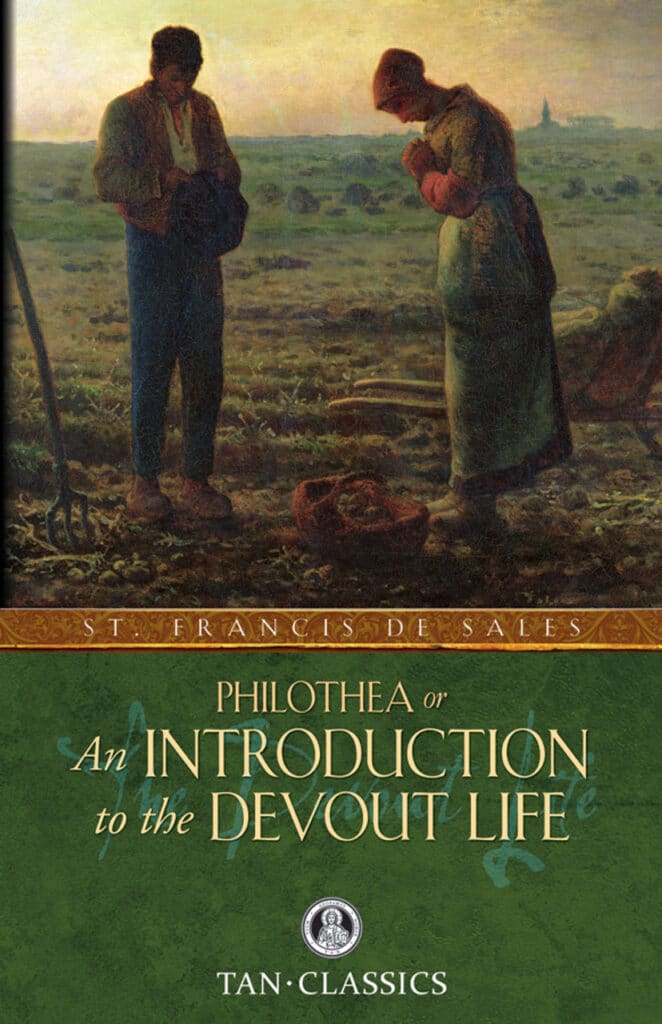

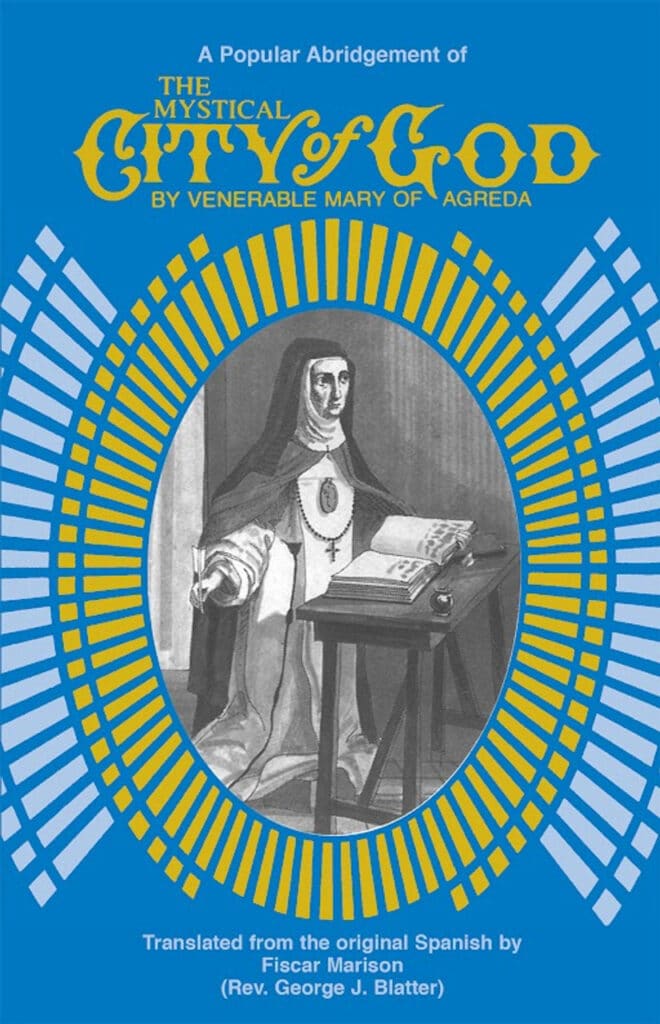



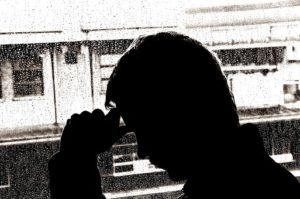
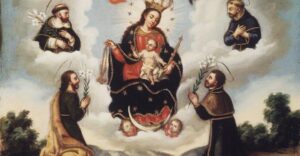

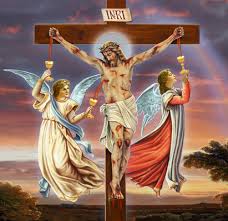
Thank you, this is Incredibly beautiful.
You’re welcome. God bless!
Thank you!
loved this read….easy to understand and your use of comparatives was really nice…would make a good book( Chapter 1).
A book! I’ll be sure to let him know. 🙂
For many years I have had a private devotion to the wounded feet of Jesus. I just discovered yours, after spending time in front of the Holy Eucharist with my Holy Face prayers. Is there a confraternity I can join? Is there a chaplet? So many questions. Thank you!
Thanks for sharing about your private devotion. I don’t know of any and I have never come across anything such as a Chaplet, but my goal is with this article to help the devotion gained traction so someday maybe….
Thanks for sharing about your private devotion. I don’t know of any and I have never come across anything such as a Chaplet, but my goal is with this article to help the devotion gained traction so someday maybe….
Thank you for this article it has been inspiring
God bless you
Are the feet in the top picture supposed to be feet of Jesus?
Hello, I have been having some foot pain due (I think) to injuring it while running on treadmill. It has been almost two weeks now with some discomfort but I have been offering the pain for Ukraine. Today while in the Adoration Chapel gazing at Jesus Crucified and looking at His Feet; I thought I would like to find devotional prayers to His Feet. While googling about this, I found your article. Thank you and hoping that there is some prayers of devotion. Please let me know if there is.